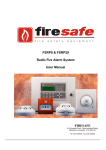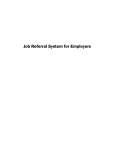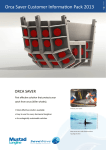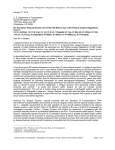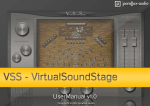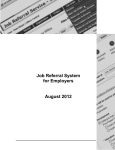Download AnaBat Express User Manual V1.5
Transcript
AnaBat™ Express Bat Detector User Manual Titley Scientific Version 1.5 TITLEY SCIENTIFIC CONTACT DETAILS Titley Scientific A division of Elexon Electronics Unit 6, 253 Leitchs Rd (GPO Box 5536), Brendale QLD 4500, AUSTRALIA Head Office (Australia) (Australia) P +61 7 3205 8450 F +61 7 3205 8449 www.titley-scientific.com [email protected] UK Office 16/17 Arkwright Suite, Coppull Enterprise Centre, Mill Lane, Coppull, Lancashire PR75BW, ENGLAND P +44 (0) 2920 022 099 [email protected] USA Office 601 Business Loop, 70, Suite 105 Columbia, Missouri 65203, USA P +1 (573) 442 8745 [email protected] AUTHORS AND ACKNOWLEDGMENTS This manual was written by Julie Broken-Brow and Chris Corben. We greatly appreciate the time, comments and assistance given by those people who were ‘beta testers’ for the AnaBat™ Express and this manual. The testing and troubleshooting have improved the new detector and increased the clarity of the manual. DOCUMENT HISTORY Manual Version Release Date Firmware Version Major Additions and Changes 1.0 08/04/2014 5504D - 1.1 10/05/2014 V5504L Manually changing timezone; fine-scale sensitivity change; setting a schedule update; downloading to sequence files; visual instructions; FAQ addition 1.2 22/05/2014 5504Q Schedule instruction change 1.3 22/10/2014 5505L Battery life; extension cables; setting a schedule update; deleting files from SD card. 1.4 23/10/2014 5505L Comments about using NiMh batteries 1.5 02/02/2015 5506G Downloading files using Analook; how to use new GPS feature 2 CONTENTS INTRODUCTION .................................................................................................................................................4 FEATURES OF THE ANABAT™ EXPRESS ........................................................................................................4 GETTING STARTED .............................................................................................................................................5 USER INTERFACE .................................................................................................................................................... 5 SD CARDS ................................................................................................................................................................. 7 USB CABLE ............................................................................................................................................................... 7 MICROPHONE ......................................................................................................................................................... 7 POWER REQUIREMENTS ....................................................................................................................................... 7 ANABAT™ EXPRESS BASIC OPERATION ........................................................................................................9 SCHEDULE RECORDING MODE .......................................................................................................................... 9 NIGHT ONLY RECORDING MODE..................................................................................................................... 10 CONTINUOUS RECORDING MODE ...................................................................................................................11 TRANSECT MODE ..................................................................................................................................................11 TESTING THE SYSTEM.......................................................................................................................................... 12 WEATHERPROOF CONSIDERATIONS............................................................................................................... 13 DOWNLOADING DATA .................................................................................................................................... 13 HOW TO DOWNLOAD FROM AN SD CARD .................................................................................................... 13 UNDERSTANDING FILES AND FILE NAMES...................................................................................................... 15 DIAGNOSTIC LOG FILES...................................................................................................................................... 16 GPS FILES................................................................................................................................................................ 16 SOFTWARE ......................................................................................................................................................... 17 ANABAT™ TOOLBOX..................................................................................................................................... 17 Connecting your detector to the PC ...................................................................................................................... 17 Checking serial number and firmware version...................................................................................................... 17 How to upgrade firmware.........................................................................................................................................18 Setting the clock/timezone.......................................................................................................................................18 Adjusting sensitivity and data division .....................................................................................................................19 Choose a recording mode ....................................................................................................................................... 20 Setting a schedule ..................................................................................................................................................... 20 Estimate the battery life ............................................................................................................................................ 26 Viewing data and log files..........................................................................................................................................27 ANALOOKW ................................................................................................................................................... 28 TIPS FOR PASSIVE MONITORING ................................................................................................................. 29 POWER AND DATA STORAGE SPACE ...............................................................................................................29 EQUALIZATION .....................................................................................................................................................29 MOUNTING AND PLACEMENT...........................................................................................................................29 TROUBLESHOOTING ....................................................................................................................................... 31 FAQS ....................................................................................................................................................................32 FURTHER INFORMATION ................................................................................................................................33 3 INTRODUCTION All bats belonging to the traditionally recognized suborder Microchiroptera (micro-bats) use echolocation to avoid obstacles and locate prey in conjunction with their eyesight. Evolutionary history and differing ecological requirements mean echolocation calls tend to differ between species, so they are often useful for identification. Echolocation calls vary greatly depending on what a bat is doing, especially in response to how close the bat is to clutter. Bat detectors detect the echolocation calls emitted by bats and produce audible and/or visible images which reveal the presence of bats, their activity and useful features of their calls. This gives us the opportunity to observe, identify and study bats without catching them. The AnaBat™ Express is equipped with a broad-band microphone and uses Frequency Division to produce data files which can be analysed using Zero-Crossings Analysis to make them visible as sonograms (time x frequency graphs). This manual contains the operating instructions for the AnaBat™ Express, including advice for successful recording of bat calls. Furthermore, this manual includes testing and troubleshooting procedures. FEATURES OF THE ANABAT™ EXPRESS The AnaBat™ Express is designed for low power and efficient operation in a compact, weatherproof and easily-concealed case. It can be used anywhere and is extremely fast to deploy and download. It uses a broadband, omni-directional, weatherproof microphone, which can be plugged directly into the case or via extension cable. The AnaBat™ Express is designed for passive monitoring. Some of the key features of the AnaBat™ Express include: • New, easy-to-use interface for setup and download • Weatherproof, camouflaged plastic case (IP Rating 67) • Weatherproof, compact microphone (IP Rating 54) • Built-in GPS for transect mode, location, setting the clock and calculating sunset/sunrise times • Runs 14 nights on 4 alkaline AAs • Records temperature and battery voltage • One-touch recording mode selection for continuous, scheduled or night-only recording (with automatic sunset and sunrise calculation) • Removable SD card for data storage and easy downloading 4 GETTING STARTED USER INTERFACE Inside the AnaBat™ Express camouflage case is the control panel and basic instructions on use. Magnet on lanyard Check LED Microphone Socket with dust cap Clock Battery Battery Compartment Dust Cap Storage Microphone Storage SD Card Slot USB Port Power LED Recording LED Power Button Button Microphone LED GPS LED Select Button Schedule LED Night Only LED Continuous LED 5 LED Indicators Solid Light Power LED Schedule LED Night Only LED Continuous LED Recording LED Detector is on Recording on a predetermined schedule Will record from dusk until dawn Detector is continuously recording Detector is recording Flashing Light . Low battery. Change batteries immediately. No Light Detector is off or asleep No schedule set - Satellite fix required - - - SD Card missing, full or faulty - Slow flash: GPS has not yet GPS LED GPS lock acquired acquired satellites Fast flash: GPS is entering No GPS lock is needed transect mode Microphone LED - Will flicker when receiving - ultrasonic signal Detector not ready, open case to see what is required. Check LED (without magnet) - In transect mode: Will flicker when receiving ultrasonic Detector is off or is working normally signal. Will flash once to indicate the Check LED (with magnet) - device is on. Will flicker when Detector is off receiving ultrasonic signal Functions Power Button Press to turn detector on/off Select Button Press to select the desired recording mode, hold to enter transect mode SD Card Slot USB Port Battery Compartment Clock Battery Microphone Storage Dust Cap Storage Microphone Socket Insert SD memory card here Insert USB cable here Insert four AA batteries here Battery to run the internal clock For storing the microphone when not in use For storing the microphone dust cap when not in use Microphone attachment site 6 SD CARDS The AnaBat™ Express comes with an SD card for data storage. The detector can use SD and SDHC memory cards, up to 32GB. Memory cards can be purchased from Titley Scientific, or most electronics/office stores. USB CABLE The AnaBat™ Express comes with a USB cable for connection to your computer. You can use this cable to configure your detector and upgrade your firmware using AnaBat™ Toolbox (see Software). You can also use the USB cable to directly stream data from your your detector to AnalookW, this can be used to view bat calls in real time. Simply connect the USB cable into the miniUSB slot on the detector and into your computer USB port. MICROPHONE An all-new microphone has been designed specifically for passive deployment applications with the following features: • Omnidirectional - ideal for passive deployments. • Integrated pre-amplifier with differential output to allow use on extension cables and provide good immunity to electrical interference. • Sensitive from 10KHz to 150KHz • Weather-proof - rain will not damage the microphone. Please be aware that water collecting on the microphone will block sound until it dries out again. If recording is required during rain the microphone should be mounted in such a way so that water cannot land on the microphone element. For more information, please refer to "Weatherproofing Considerations" • 5m, 20m and 50m extension cables are available for purchase from Titley Scientific. Cables can be daisy-chained if required. For other sized cables, please consult Titley Scientific. We can provide custom cables for your application. POWER REQUIREMENTS The AnaBat™ Express can be powered internally via 4 x AA batteries. The Power LED will begin to flash when the battery voltage is low. When it drops below a set voltage the detector switches itself off. If the Power LED is flashing you should change the batteries immediately. All AA batteries must be removed from the detector before they are 7 stored for more than a few weeks; otherwise the batteries will slowly discharge and may leak, damaging the detector. The following table shows the standard power consumption of the AnaBat™ Express. . Power consumption of the AnaBat™ Express Recording Recording (no bat activity) (bat activity) 69mW 113mW Asleep 3.06mW AA batteries can be alkaline, rechargeable, or lithium (1.5V or 3.6V). Make sure all 4 batteries are fresh and of the same type. Open the camouflage case, turn the detector off and insert the batteries into the battery compartment. Do not remove the batteries while the device is on, to avoid potential SD card corruption. When using rechargeable batteries, we strongly recommend using NiMh batteries specifically advertised as "low self discharge", for example "Panasonic Eneloop Pro". These batteries are sometimes also advertised as "pre-charged" or "ready to use". The high self discharge rate of standard NiMh batteries will cause them to be give shorter run times than expected. Battery life will depend on the condition and type of batteries being used, as well as ambient temperature, length of your recording session and amount of bat activity/ambient noise. Alkaline AA batteries typically last for 14 nights (12 hours recording per night). However in practice recording conditions can vary, so be conservative when using battery life estimates to avoid the loss of sampling time should the batteries run out before you expect. The AnaBat™ Toolbox software allows you to estimate battery life for different conditions. For further information about how long your batteries may last, see AnaBat™ Toolbox section of this manual. There is also an internal clock battery which should only need replacing about every 5 years. This is a CR2032 Coin Cell battery and can be purchased from Titley Scientific, or from battery shops. 8 ANABAT™ EXPRESS BASIC OPERATION The AnaBat™ Express is designed for fast and easy deployment. Before you start recording with your detector we recommend you check for firmware updates. See the AnaBat™ Express Toolbox section for instructions on updating firmware and setting the clock and timezone. To begin, insert fresh batteries and an SD card with sufficient memory for your recording period. Ensure the SD card is correctly orientated as per the diagram on the detector when inserting. Remove the microphone socket dust cap from the microphone socket on the front of the case. The microphone socket dust cap can be stored inside the case so it isn’t lost. Remove the microphone from inside the camouflage case and connect it to the microphone socket on the front of the case. To connect it, gently insert the microphone into the microphone socket (there is a keyway to ensure correct alignment) and rotate the knurled ring clockwise to tighten the connection finger tight. Do not over-tighten the connector or turn the body of the microphone. Turn the detector on by pressing the Power button. There are three recording modes which you can choose from: schedule, night only and continuous (see below). For most surveys, the night only recording mode is recommended. If you are using your AnaBat™ Express on the move (walking/driving) we have created a GPS transect mode (see below) to track your detector’s path and GPS tag bat calls. SCHEDULE RECORDING MODE The schedule recording mode can be customised to your preferred recording times, however it must programmed onto the SD card with a computer prior to use (see AnaBat™ Toolbox for programming instructions). To select this recording mode: 1. Set a schedule using AnaBat™ Toolbox. See the Software section of this user manual for instructions on setting up a schedule. 2. Press the Select button until the Schedule LED is lit. 3. Wait for the GPS LED to turn on solid. The detector will automatically try to acquire satellites to obtain a GPS fix. Whilst acquiring satellites, the GPS LED will flash. Once a GPS fix is made the GPS LED will produce a solid light. To assist this 9 process, place/hold the detector where there is a clear sky view, with the microphone facing skywards. The GPS fix will automatically set the clock and record the GPS location. The detector does not require a GPS fix to record in Schedule mode, however, without a GPS fix the position data could be wrong and the detector might record at the wrong time of day, and with incorrect time stamps. 4. While the case is still open, rub your fingers in front of the microphone; the Microphone LED will flicker to confirm that an ultrasonic audio signal is detected. 5. Once no LEDs are flashing, place the detector in its final deployment location and secure. Use the magnet to check the detector is functional after final deployment (see Testing the System below) NIGHT ONLY RECORDING MODE The night only mode is designed for efficient deployment. This recording mode will turn the detector on 30 minutes before sunset and off 30 minutes after sunrise. If the detector is left on, this mode will continue to record nightly until the batteries run out or the SD card becomes full. Night only mode will only work if a GPS fix can be acquired, as the detector automatically calculates the sunset and sunrise times based on the longitude and latitude of the GPS location. To select this recording mode: 1. Press the Select button until the Night Only LED is lit. 2. Wait for the GPS LED to turn on solid. The detector will automatically try to acquire satellites to obtain a GPS fix. While acquiring satellites, the GPS LED will flash. Once a GPS fix is made, the GPS LED will produce a solid light. To assist this process, place/hold the detector where there is a clear sky view, with the microphone facing skywards. The GPS fix will automatically set the clock, record the GPS location and determine the sunset/sunrise times. 3. While the case is still open, rub your fingers in front of the microphone; the Microphone LED will flicker to confirm that an ultrasonic audio signal is detected. 4. Once no LEDs are flashing, you can lock the lid closed and place the detector in its final deployment location and secure. Use the magnet to check the detector is functional after final deployment (see Testing the System below). 5. The detector will automatically attempt to acquire a GPS fix daily. If a satellite fix cannot be found, the detector will refer to the last GPS fix made. If you are moving 10 your detector to a new location, make sure you turn the detector off and on again at the new location to ensure a correct GPS fix. CONTINUOUS RECORDING MODE The continuous recording mode will record continuously, starting as soon as this mode is selected. This mode will continue to record until the batteries run out, the SD card becomes full or the detector is turned off. This recording mode is designed to be used when the detector is deployed and collected in the same recording night; it can also be used to monitor acoustic activity in roosts during the day. To select this recording mode: 1. Press the Select button until the Continuous LED is lit. 2. Wait for the GPS LED to turn on solid. The detector will automatically try to acquire satellites to obtain a GPS fix. While acquiring satellites, the GPS LED will flash. Once a GPS fix is made, the GPS LED will produce a solid light. To assist this process, place/hold the detector where there is a clear sky view, with the microphone facing skywards. The GPS fix will automatically set the clock and record the GPS location. The detector does not require a GPS fix to record in Continuous mode, however the GPS and time stamps may not be correct if this is the case. 3. While the case is still open, rub your fingers in front of the microphone; the Microphone LED will flicker to confirm that an ultrasonic audio signal is detected. 4. Once no LEDs are flashing, place the detector in its final deployment location and secure. Use the magnet to check the detector is functional after final deployment (see Testing the System below). In standard Schedule, Night Only or Continuous mode, do not deploy if any LEDs are flashing, as this means there is an error or problem. See troubleshooting for resolving flashing LEDS. In Transect mode, the Check LED will flicker when the detector is recording. TRANSECT MODE The transect mode will record your GPS location every second. This will create a GPS file, which can be used to display the sequence files recorded on a map at their closest GPS 11 fix, as well as the path traced by the detector. You can use the transect mode in conjunction with any of the three standard modes (Schedule, Night Only or Continuous). To activate the transect mode: 1. Select your desired mode by following the instructions above. 2. Press and hold the Select button until the GPS LED flashes quickly (should take about 5 seconds). 3. The detector is now in transect mode, when recording in transect mode the Check LED will flicker when receiving ultrasonic signal. 4. To exit transect mode, simply hold the Select button until the GPS LED flashes quickly again (should take about 5 seconds), or turn the detector off and on again. Be aware that transect mode will consume batteries more quickly than a standard mode. TESTING THE SYSTEM To test the operation of the detector before deployment you can open the camouflage case and rub your fingers in front of the microphone; the Microphone LED (inside the case) will flicker to confirm that an ultrasonic audio signal is being detected. To test the operation of the detector while the camouflage case is closed, after deployment, place the magnet (at end of lanyard) next to the Check LED (beside microphone, on outside of case); a brief flash indicates unit is working. Hold the magnet next to Check LED and rub fingers near the microphone. The LED flickering faintly confirms that ultrasonic audio signals are being detected. COLLECTING THE DETECTOR Best practice is to take the detector inside to a clean, dry place out of the weather. Then dry it off as best as possible if it is wet. If there is a large temperature difference between inside and outside, let it equilibrate to room temperature before opening the case. A cold detector opened in a warmer place will often result in a film of water condensing over the electronics. Make sure the inside of the case is completely dry before closing the lid. To turn the detector off, simply open the camouflage case and press the Power button once. Remove the microphone from the microphone socket and store inside the camouflage case for storage and transport. Replace the microphone dust cap onto the microphone socket whenever the microphone is not attached. Remove the SD card to 12 download the data to your computer. Remove AA batteries for long storage periods. Do not remove the SD card or batteries while the detector is on, otherwise the SD card could be corrupted. WEATHERPROOF CONSIDERATIONS The AnaBat™ Express is designed as a weatherproof detector, which means the detector can be left in the field during rain, sunshine and snow without any additional weatherproofing. However if the device is left in the rain, please consider the following advice: 1. The detector is only weatherproof when the camouflage case is closed; do not open the case in the rain. 2. Mount the detector vertically (with microphone pointing horizontally) to prevent water droplets settling on the microphone element. Such water droplets can block ultrasonic signals from reaching the microphone until they dry out. This needs to be considered when you are analysing your data. Sensitivity can be reduced by inclement weather. 3. Dry off the camouflage case and microphone before opening the detector or removing the microphone. This prevents moisture from entering the detector. 4. The detector should not be partially or fully submerged in water. 5. Desiccant satchels can be added to prevent condensation, these will need to be periodically replaced or dried. The detector operates in a wide range of temperatures, however the AA batteries you use will have temperature limits; these should be followed. Most alkaline and lithium batteries are recommended for use between -18oC to 55oC; and -20oC to 60oC respectively. Please note that in cold temperatures battery capacity (and therefore detector run time) will be reduced. Also be aware that if your detector is left in direct sunlight, especially inside a vehicle, the temperature inside the case may be much higher than ambient temperature. DOWNLOADING DATA HOW TO DOWNLOAD FROM AN SD CARD Once you have recorded the bat calls onto the SD card, you can simply transfer the files from the SD card onto your computer or an external memory source. 13 1. To begin, remove the SD card from the detector (do not remove while the detector is on) 2. Insert the SD card into your computer (if it has a SD card slot) or into an external SD card reader (available from Titley Scientific) 3. Open the SD card folder in Windows Explorer 4. Copy/cut the files from the SD card folder into the desired folder/storage device. Make sure to include the log file with the ZCA files. If you would like to convert the ZCA files to sequence files (See Understanding Files and File Names) you can use AnalookW to download the calls. If you have used the detector I transect mode, you will need to download using Analook to retrieve your GPS file. You need to have the latest version of AnalookW to do this; it can be downloaded from www.titley-scientific.com 1. To begin, remove the SD card from the detector (do not remove while the detector is on) 2. Insert the SD card into your computer (if it has a SD card slot) or into an external SD card reader (available from Titley Scientific) 3. Open AnalookW (version 4.0r or later) 4. Click on Tools, then click Download SD card from Express 5. Select the drive which has your SD card (usually is located automatically). Or you can click the Browse button and select the SD card using Windows Explorer. Click Next 6. Click Browse to select the destination folder for your downloaded call files. If you do not select a folder, it will create a default folder C:\NewExpressData\. Check the Folder per night if you would like AnalookW to separate your data into nightly folders. Check Erase SD Card if you would like the files to be permanently deleted off the SD Card after downloading. Click Next. 14 7. Click Next. Your downloaded files will be located in the destination folder selected, ready to be viewed. This download will create both ZCA files and sequence files. Click Finish to close the window. If a message window appears stating “No data in file”, this means that there is a file that did not contain bat calls. This commonly occurs if you have turned the detector on and off one day without recording bats, then set the detector out another day. Your recorded data will still be converted correctly. UNDERSTANDING FILES AND FILE NAMES Log files are stored as CSV files, with extension of .csv. GPS data is stored as a GPS text file, when downloaded this is converted to a GPS.gpx file which can be opened in most mapping software, including Google Earth. AnaBat data is recorded into ZCA files, with extension of .zca. A single ZCA file contains all the data for one 24 hour recording session. It can be opened/viewed directly in AnalookW, or it can be converted to AnaBat sequence files, which will be more familiar to most users. ZCA file names include the serial number of the detector and the date of the recording: SERIALNO YEAR-MM-DD.zca for example SN300632 2014-01-15.zca was recorded on detector SN300632 on 15th January 2014. AnaBat sequence files have a very specific filename structure, which encodes the date and time at which the file was recorded: YMDDhhmm.ss# The first character encodes the year. "a" was used for the year 2000. "o" denotes 2014, "p" 2015 etc. The second character encodes the month. January is "1", September is "9" but October is "a", November is "b" and December is "c". The last four characters in the filename give the time in hours and minutes of 24 hour time, so 2035 is 35 minutes past 8 15 PM. Finally, the first two characters of the extension encode the seconds, from "01" to "59". For example the file m10800239.31# was recorded in 2012, on 8th January at 2:39.31am; and lb272212.01# was recorded in 2011, on 27th November at 10:12.01pm. DIAGNOSTIC LOG FILES The diagnostic log files contain all the information about the recording sessions on the SD card. Information such as temperature, battery voltage, GPS locations, settings and user interactions can be extracted from this file. Each log file can be opened can be opened as a text file or in AnaBat™ Toolbox, which will interpret the data in the log file (see Software). GPS FILES A GPS file is created if you have used the detector in transect mode. On the SD Card, the GPS data is stored in a text file (.txt). Once downloaded using AnalookW (see How to download from an SD Card) this file is converted into a GPS.gpx file. This can be opened directly into most mapping software including Google Earth. It displays all of the sequence files recorded at their closest GPS fix, as well as the path traced by the detector. 16 SOFTWARE ANABAT™ TOOLBOX The AnaBat™ Toolbox software is available for download at the Titley Scientific website (www.titley-scientific.com). This program can be used for the following: • Check the serial number and firmware version of your AnaBat™ Express • Set the clock/time zone • Change the sensitivity of the detector • Choose your recording mode • Set a schedule • Change the data division ratio • Estimate the battery life • View the data and log files on the SD Card • View graphs of the battery consumption and temperature over time • View the GPS locations on Google maps Connecting your detector to the PC To connect the AnaBat™ Express to a PC follow these steps. Do not connect the detector to you PC before installing the AnaBat™Toolbox software. 1. Download and install AnaBat™ Toolbox from www.titley-scientific.com 2. Turn on your detector and connect the USB cable from the detector to the PC. 3. Your PC will automatically install the driver for the AnaBat™ Express. Please wait until this is completed before running the AnaBat™ Toolbox software. 4. Open AnaBat™ Toolbox, your AnaBat™ Express should automatically be detected. Checking serial number and firmware version The serial number for the detector can be found on the inside of the camouflage case on the right side of the battery compartment, also above the deployment instructions in the case. To check the serial number using AnaBat™ Toolbox, turn your detector on and connect the detector to your computer via USB cable. Under the detector tab of AnaBat™ Toolbox the first line shows the detector type (Express), the serial number and the hardware version (HW). The microphone is also issued with a separate serial number which can be found on the barrel of the microphone. The firmware version is also displayed under the Detector tab in AnaBat™ Toolbox. 17 How to upgrade firmware Regular upgrades to the firmware will be supplied by Titley Scientific to improve the detector over time. It is important to upgrade the firmware on your detector as soon as an updated version is available. Whenever your computer is connected to the internet, AnaBat™ Toolbox will automatically search for updates. When you update the AnaBat™ Toolbox software this will automatically contain new firmware upgrades. To update the firmware turn on the detector, connect your detector to the computer using the USB cable and open AnaBat™ Toolbox. If a firmware upgrade is available, the firmware version will be highlighted in orange and there will be an option to Upgrade Now. Click this button and follow the prompts. If there are no new upgrades, the firmware version will be highlighted in blue. Setting the clock/timezone Whenever the detector acquires a GPS fix, this will automatically set the clock/timezone. However if you are unable to acquire satellites for a GPS fix or would like to set the clock manually, this can be done in the AnaBat™ Toolbox software. Turn the detector on, then connect it to your computer with the USB cable and open AnaBat™ Toolbox. The time/timezone on the detector will be displayed under the Detector tab. If the time is highlighted in orange, the time is not set. To set the clock, simply click the Set the Clock button and it will synchronize with your computer clock. This should only need to be performed once. After the clock is set, the time will be highlighted in blue. 18 To set the timezone, click on the Find Timezone button. Type your location into the search bar and click Search. If the placemark is correct, click Use Location. If you do not have internet you can manually type in your timezone. Adjusting sensitivity and data division The AnaBat™ Express is optimized for most detection situations with its default settings. However if you would like to change the sensitivity or data division, this can be done using the AnaBat™ Toolbox. Turn on the detector, connect to your computer using the USB cable and open AnaBat™ Toolbox. Under the Detector tab, the default sensitivity setting will be highlighted (High, Medium or Low), we suggest that 8 (High) is the appropriate setting in most situations. However if you are in a high-noise area you may prefer to use Low, alternatively if you are trying to record a particularly quiet bat species, you may prefer to use a higher level of High. To change the sensitivity simply click the sensitivity level you want, or move the scale bar for fine-scale changes. 19 The default data division ratio on the AnaBat™ Express is 8. However if you would like to change the data division ratio, click on the data division ratio (under the Detector tab) you want: 4, 8, 16 or 32. Choose a recording mode You can select the recording mode directly on the detector or through AnaBat™ Toolbox. To choose a recording mode in AnaBat™ Toolbox, connect the detector to your computer using the USB cable, turn the detector on and open AnaBat™ Toolbox. Under the Detector tab click on your desired recording mode: Schedule, Night or Continuous. Setting a schedule To use the schedule recording mode, you will need to set a schedule on the SD card prior to recording using a computer with AnaBat™ Toolbox. To set a schedule: 1. Remove the SD card from the detector (make sure the detector is switched off first) 2. Insert the SD card into your computer (if it has a SD card slot) or into an external SD card reader (available from Titley Scientific) 3. Open AnaBat™ Toolbox and click on the Schedule tab 4. Click on the battery type you plan to use 20 5. If not already selected, click the Schedule recording mode 6. Click on Find for deployment location, and google maps will appear*. a. Type your location into the search bar and click Search. If the placemark is correct, click Use Location. *If you do not have internet you can type in your longitude and latitude, then manually type in your timezone 7. Click on Add Period to create a set recording period. You can either enter a fixed start and stop time, or you can enter times relative to sunset and sunrise (or a combination of both). 21 a) To determine the sunset or sunrise times based on your specified location, simply hover your mouse over the moon or sun symbols and the time will be displayed. b) To record from 6pm (18:00) to 5am (05:00), for example, you will need to enter a From time of 6:00 and select PM from the drop down menu, then enter a To time of 5:00 and select AM from the drop down menu. To record from 30 minutes after sunset to 1 hour before sunrise, enter a From time of 0:30 and select after from the first drop down menu, then sunset from the second drop down menu. Then enter a To time of 1:00 and select before from the first dropdown menu, then select sunrise from the second dropdown menu. To record from 10 minutes before sunset to 3am, enter a From time of 0:10 and select before from the first drop down menu, then sunset from the 22 second drop down menu. Then enter a To time of 3:00 and select AM from the drop down menu. c) The shaded area on the time bar and the number of hours per day will be displayed depending on the specified recording period. 8. To record over two or more periods in a night, set your first recording period (following steps 7a-c), then repeat for each new recording period. Each recording period will be shaded on the time bar. 9. To change or remove a time period, simply click on the shaded area and either edit the times or click Remove. 10. To deploy your detector for a set period you can choose your deployment dates, and use our recording rate function to maximise detector nights. If you do not 23 select a deployment period, the default deployment period is from the date the schedule is set until the estimated battery life end date. a. To choose your deployment period dates, select your dates by clicking on the dropdown calendar. b. To continue the recording schedule until batteries are depleted, choose your start date, then choose an end date that matches the estimated battery life. c. If you plan to replace the detector batteries regularly or run the detector with a solar panel and you would like the schedule to continue running 24 past the estimated battery life, simply select an end date that is well beyond your estimated survey end date (for example 1 year). d. To use our recording rate function and maximise your recording period, use the scroll bar to choose your Recording Rate. As you change the recording rate, the number of battery estimate days will change correspondingly. For example, a 50% recording rate will record for 50% of the deployment time (out of 5 minute blocks), in other words, it will turn the detector on for 2.5 minutes, then off for 2.5 minutes. A 20% recording rate will turn on for 1 minute, then off for 4 minutes. A 100% recording rate will record all the time. OR e. If you require your detector to be out for a certain period (eg. 3 weeks), choose a recording rate that will match the battery estimate to that period. 25 11. Click on the Save Schedule button Estimate the battery life AnaBat™ Toolbox is also equipped with a useful feature to estimate the battery life based on the settings and data volume. This feature is an estimate only and actual battery life may vary. To estimate the battery life: 1. Open AnaBat™ Toolbox on your computer 2. Click on the Schedule tab 3. Click on the type of battery you plan to use, the standard battery capacity will automatically update below. However you can change the battery capacity if your chosen batteries vary, simply type in the milliamp hours (mAh) 4. Select the recording mode you will use (if schedule, enter your schedule details) 5. Move the gauge to select your predicted data volume; this is the amount of bat activity and noise you expect to be recording. You can choose between Low, Medium and High. 6. Move the gauge to select the number of Night Hours you are recording for. For example if sunset is at 7:30pm and sunrise at 5am, the number of night hours will be 9.5 hours. The detector starts recording 30 minutes before sunset and finishes 30 minutes after sunrise. This extra hour is automatically accounted for in the calculation, there is no need to add it to the number of night hours. 7. Your estimated battery life will be displayed below. 26 Viewing data and log files While your SD card is inserted into computer (or into a card reader), you can view the data and log files using AnaBat™ Toolbox. Simply open AnaBat™ Toolbox and click on the SD Card tab. The SD card will automatically be selected, if not then click on the (F:\) drive to select the correct SD card. The data files will be listed as .zca files which each represent a single night of recording. The log files will also be listed as .csv files which each represent a single night of recording. To view the battery and temperature variations and GPS location of each log 27 file, simply click on the desired log file. Any errors or warning associated with that night of data will be displayed. A graph will display the battery voltage (left axis, in blue) and temperature variation (right axis, in orange) for the selected recording night. The GPS location will also be displayed using Google Maps, you can switch between map/satellite image and zoom in/out of this map, or click the “view on google maps” link to view in an separate, larger browser window. ANALOOKW AnalookW is the software you can use to view and analyse zero crossing recordings from your detectors. You can open/view both ZCA files and AnaBat sequence files in AnalookW. With this program you can label files, create and apply filters, analyse call pass characteristics, create automated keys and count labels, amongst many other features. AnalookW can be downloaded from the Downloads tab on www.titley-scientific.com We are regularly updating the AnalookW software to improve its functionality and capabilities, so please ensure that you are using the latest version. 28 TIPS FOR PASSIVE MONITORING POWER AND DATA STORAGE SPACE For short term monitoring sessions the AnaBat™ Express can simply be powered by AA batteries. We recommend Alkaline or low self-discharge type Nickel Metal Hydride rechargeable batteries with a capacity of at least 2500mAh. These add very little weight and may last 14 nights depending on the length of your recording sessions, battery type and condition etc. Be conservative in your battery run time estimate because battery capacity is also affected by other factors such as temperature, and they may not last as long as expected in the field. Try the battery life estimator in AnaBat™ Toolbox (see Software) for a more accurate idea of how long your batteries will last. EQUALIZATION In some situations where multiple detectors are deployed, it may be a requirement to ensure all the bat detectors being used are equalized to the same sensitivity. This is important whenever quantitative comparisons of bat activity will be made. Levels of sensitivity will vary among detectors due to differences in age, wear and so on. Bat detectors can be equalized using a ‘Chirper’ or ‘Chirp Board’ which emits an ultrasonic signal at a constant frequency. In the future, AnaBat™ Toolbox will have the ability to equalize AnaBat™ Express. MOUNTING AND PLACEMENT The placement of any detector can have a significant effect on the results of a survey. It is important to consider the location and height of the detector. Detectors are typically placed in or beside a ‘flyway’, a corridor where bats will fly through or beside vegetation. You can place your detector anywhere bats will fly, depending on your survey goals or target species. Avoid placing the detector inside dense vegetation where most bats cannot fly. The AnaBat™ Express comes with a weatherproof, omnidirectional microphone. An omnidirectional microphone means that it is able to record ultrasonic sounds from all directions, however sensitivity is limited behind the detector. One advantage of an omnidirectional detector is that mounting direction is not crucial; however it is more 29 susceptible to any noise from sources all around the microphone. Avoid having vegetation or other objects between the detector and the bat’s expected flight path, or close beside the detector, as echoes can degrade the signal. The best signals will be obtained when the microphone is in the open, away from other objects and pointing in the direction of the bat’s expected flight path. We do recommend that the AnaBat™ Express is mounted vertically (refer to the section on weatherproofing) so that any rain water runs off the microphone and doesn’t settle on the element. Also make sure that the magnetic lanyard is not being blown around in the wind as this may create unwanted noise on your recordings. It is also important to avoid surface noise, such as vegetation brushing against the detector case or microphone. The AnaBat™ Express camouflage case is designed so that the device can be padlocked closed. 30 TROUBLESHOOTING FLASHING INDICATORS Any LED indicator persistently flashing means there is an error or problem. Do not deploy the detector if there are LEDs flashing. Please see the table below to resolve a flashing LED indicator. LED Indicator Power Schedule Continuous Problem Solution Batteries are too low Replace AA batteries No schedule set Error Need to set the schedule on the SD card with a computer, or select a different recording mode Turn the detector off then on again Make sure a card is inserted. Make sure the card is properly seated in its socket. Try removing it and Recording SD Card missing, full or faulty replacing it. If that does not work, use a different card. The faulty card may be fixed if formatted on a computer. Night Only Satellite fix is required If this persists for several minutes, move to an area GPS Satellite fix is required with a clearer view of the sky* for better satellite reception and restart the detector by turning it off, If flashing without a magnet, Check (front of case) satellite fix is required then on again. If no GPS fix can be acquired, use a different recording mode If flickering when receiving ultrasonic signal, the detector is in Transect Mode * You only need to move the detector until a GPS fix is obtained. Once a fix is obtained, you can move the detector to its intended deployment site 31 FAQS Q. How far away can a bat be detected using the AnaBat? A. Detection distances will vary with frequency and loudness (amplitude) of the bat calls, atmospheric attenuation, and the directional characteristics and sensitivity of the bat detector. It will also be affected by the amount of structural clutter (obstacles such as vegetation) which can block the path of the signal. The frequency and amplitude of the bat call have a major influence on how far away the call can be detected, and makes some species easier to detect from afar than others. Quiet (low amplitude) and high frequency bat calls are more difficult to detect than loud (high amplitude) or low frequency calls. Call amplitude can vary within an individual, as many bats will reduce the amplitude of their calls as they approach prey or depending on the context in which they are flying. Call amplitude can also vary between species. Species which always produce low amplitude calls (‘whispering bats’) will be more difficult to detect from a distance than other species. In addition, bat calls of higher frequencies cannot usually be detected from as far as those of lower frequencies, as higher frequencies suffer greater absorption by the atmosphere than lower frequencies. Atmospheric absorption depends upon weather conditions such as temperature, humidity and air pressure. This relationship is complex, but in general, cool dry conditions will allow the detection of bat calls over greater distances. The sensitivity of the detector also has a major influence on detection distance, and while there is always some variability in sensitivity among units, the biggest influence is the sensitivity setting. Given all the above, it is obvious that detection distances will vary enormously. Many bats are easily detected over 30m under typical conditions, while some species which call at low frequencies may be detectable from as far as 100m. However, some species will be hard to detect from even 1m away. This is why activity levels measured acoustically cannot easily be compared between different species. However, acoustic indices of activity are generally much less biased than indices based on capture data Further information on detection distances and the calculation of detection fields and distances can be obtained from the software AnaVolumes. 32 Q. Can I use the AnaBat™ Express as an active detector? A. While the AnaBat™ Express is designed as a passive detector, it can be used as an active detector by connecting the detector via USB to a computer or some tablets. While the detector is connected to the computer and recording, simply open Analook and click on the red record button from the menu and it will begin to stream the calls in real time. Q. When I open a ZCA file in AnalookW it looks like its empty? A. The ZCA file recorded on the SD card actually represents an entire night of data, so initially you will need to play around with AnalookW to see what your preferred method of viewing the file is. Many people prefer to compress empty space between call pulses, and view in F7 zoom. Also remember that to see all the calls from a ZCA file, you will need to scroll the file across the screen. If you do not like viewing/analysing ZCA files, you can change them to sequence files. See Downloading Data for more information. Q. Can I buy a directional microphone for the AnaBat™ Express? A. There are no other microphone options available for the AnaBat™ Express at this time, but it is our intention to offer various options in the near future. In the meantime you can use a ‘cone’ over the end of the microphone which will limit its directionality. This simple modification can be used in the absence of a directional microphone. FURTHER INFORMATION For further information about zero crossing analysis techniques, comparisons of detection vs. capture techniques as well as practical considerations and study design, please visit the Titley Scientific website: www.titley-scientific.com 33

































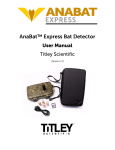
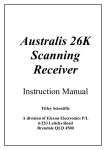
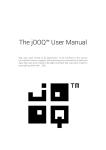
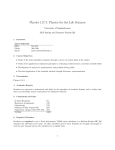

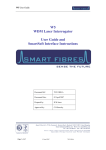
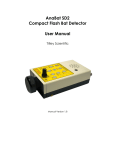

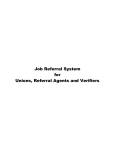

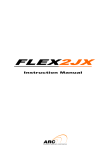
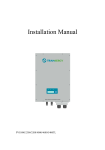
![Roostloggers [Titley] - An Introductory Manual](http://vs1.manualzilla.com/store/data/005649014_1-8c618e497bb2550a491bca85d50a292e-150x150.png)
